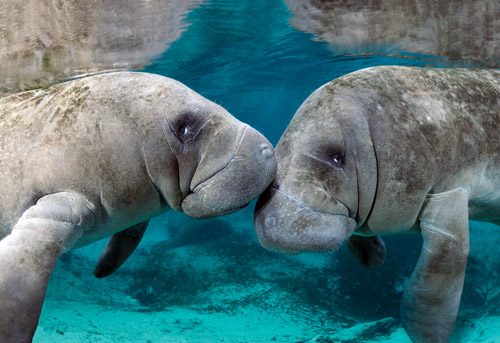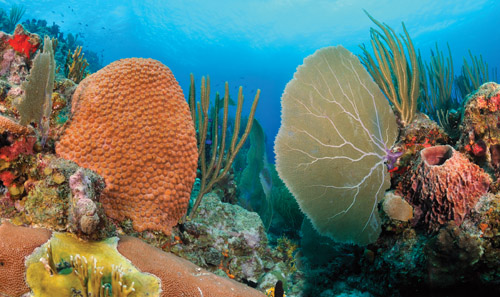Focus on Feelings
A truly great photograph evokes an emotional response
Text and Photos By Michel Gilbert & Danielle Alary
Memorable images transcend technical perfection. They are pictures that move us, that directly connect with our emotions.
Photographer Ansel Adams wrote: “A great photograph is one that fully expresses what one feels, in the deepest sense, about what is being photographed.”
Adams was right: we take pictures for all sorts of reasons, but one of the strongest is the desire to convey to others the emotions felt when the image was made. Underwater photography has tremendous potential in this regard.
Iconic photographs stand the test of time and technology. They touch our hearts and our minds.
Using the emotional content of an image to create a lingering impression on the viewer is an approach used by professional photographers. Amateurs can achieve the same results with the same technique.
As a photographer, your tools are light and composition. Using them appropriately makes all the difference between an ordinary photograph and
a memorable image.
It means that, before pressing the shutter, you must examine your subject in a holistic fashion and make the technical decisions to translate your feeling in a two-dimension image.
As beginners we are always caught up in the ‘how’: shutter speed, aperture, ISO, lens, strobe, etc. However, making an image is all about the ‘what’: the use of light as a brush to properly “paint” the subject, and composition to increase the effectiveness of the picture.
In this industry we tend to focus on the work of other underwater photographers. Wean yourself from that habit! Consider topside work and even dare to venture beyond. Learn from those who mastered light and composition long before the first permanent photographs were produced by Niépce and Daguerre in the nineteenth century. You can learn a lot on the subject simply by visiting museums and analyzing the Masters’ “chefs-d’oeuvres”.
Our friend, professional painter Pascal Lecocq (himself an incredible artist) taught us how Vermeer, the great Dutch painter, worked his brushes and colour palette to achieve subtle renderings in light and composition. Looking at this master’s paintings becomes a lesson in lighting.
As an underwater photographer, use the sun, your strobes and the camera sensors to attain the same result.
Why care about the emotions?
Have you ever thought about the camera used by Robert Doisneau in his famous ‘Kiss by the Hotel de Ville’ picture, or Alfred Eisenstaedt ‘V-J Day in Times Square’ image? How about Ansel Adams’ perfect black and white rendition of the West Coast of the United States? When you look at a timeless photograph it is all about the message it carries.
You need basic technical skills to make an image, but making an image involves more. It concerns how you “sense” the environment.
Famed photographer Edward Weston wrote: “I am no longer trying to ‘express myself’ to impose my own personality on nature, but without falsification, to become identified with nature.”
And this is exactly what happens once you transcend the shutter/aperture ‘level of consciousness’: You become one with your subject, with nature.
This is where the miracle happens; where you are no longer an observer; you are immersed (no pun intended) in the subject’s universe. At this point light and composition turn into emotions.
Reaching that stage takes time and practice. The reward: your images cease being snapshots and become statements.
Interestingly, it is a lifelong pursuit. Better still, this is not a question of equipment or money. It happens at another level, where, once the basics are covered, it emerges from the very fabric of your images.
Danielle was once judging a photo contest in Europe and Ernest Brooks II, the famous black and white underwater photographer chaired the jury. Brooks is recognized as one of the most influential and talented underwater photographers of our time. He only asked one thing from his jury members: “Pick the image that has the strongest message.” That says it all.
How do you reach that level? Simple: practice.
There is nothing wrong with snapshots, we all make them on a daily basis using our point-and-shoot cameras or our cellphones.
Going further in your photography becomes a means to learn more about nature and express yourself. It may not be necessary, but it sure is a lot of fun.
Happy Bubbles!









